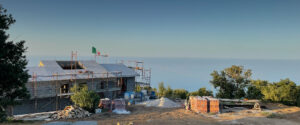Whether you are imagining a sea-view property for summer holidays, a retirement cottage in the hills or a grand Tuscan-style villa with gardens and a pool, the idea of building your own house in Sicily is always going to be an enticing one. What could be better than finding your own plot of land, shaping it to meet your needs and then crowning it with a home that’s literally made to measure?
On the other hand, however much you like the idea of making a home in Sicily, the red tape, cultural barriers and economics of a new-build property can be intimidating. A custom-built house seems instinctively as if it should be something reserved for the super-rich or the insanely ambitious. We understand the worry, but know too that it can absolutely be done, and without spending a fortune.
In this article we’ll talk you through the process of how you can build your own house in Sicily, tell you about some areas where you can find different kinds of plot, and discuss the key personnel you’ll need to get in your team. Lastly we’ll discuss how Property in Sicily can help make the process as easy as possible. And if you have any questions at the end, just drop us a line and we’ll be only too happy to answer them!
How it Works: Our 10-Step Guide
More and more of our clients are choosing the route of building from scratch. We’ve followed many of them right the way through their journey, so we know that the process is not for the faint-hearted. However, as with everything in life, preparation is key – so here’s our step-by-step guide: how to build your own house in Sicily:
1. Find your plot of land
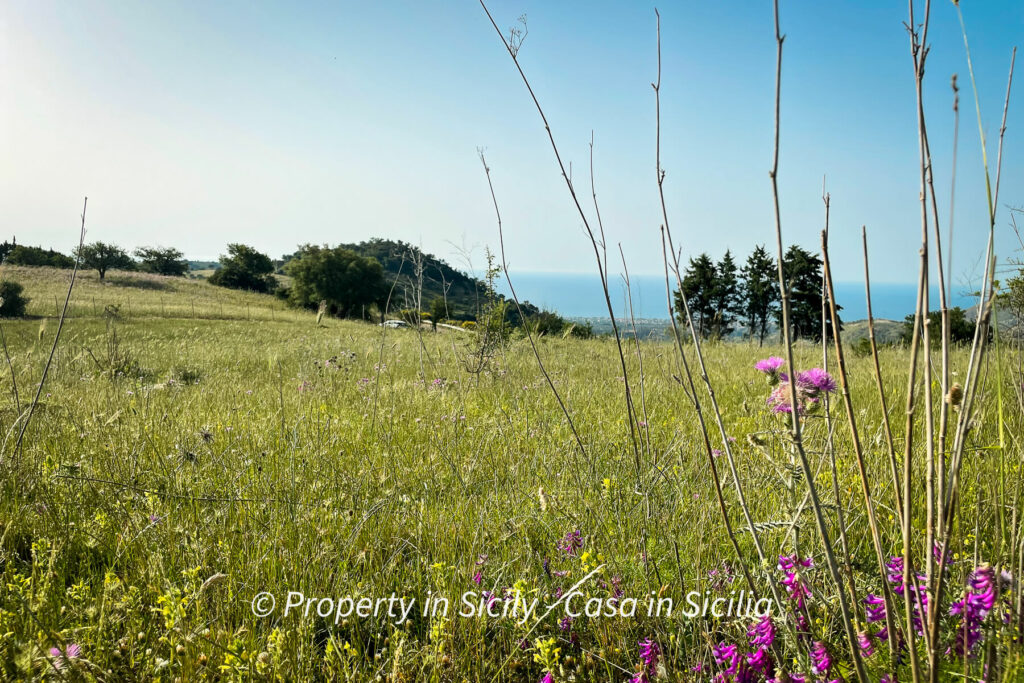
Of course, the most important thing to get right is the plot. Are you looking for a dramatic, uninterrupted view of the sea or mountains? We certainly have plenty of that in Sicily – but hilly land will need to be partially flattened or terraced. On the other hand, nice level countryside may not have the ideal conditions for breeze or drainage. If you’re looking for a remote plot, you can of course get more land for your money, but you’ll need to consider how you will connect it to supplies of water and electricity.
The great news is that land is plentiful in Sicily – we have an area almost the size of Belgium, and a high percentage of inhabitants live in towns or cities. You can browse through the plots we already have in our carefully chosen listings. Just choose the filter “Land” from the dropdown menu marked “All Types”.
If you find another plot through a third party, Property in Sicily can still help. Let us know about it before contacting the seller, especially if it is another agency, and we can represent you in the negotiations. Most agencies are willing to negotiate an agreement with us whereby we can give you our support in the transaction without increasing your costs.
In the next section we’ll talk in more detail about what kind of land you can expect to find in different areas of Sicily.
2. Do a survey
This phase includes two parts – a site visit and a careful check through the property’s documentation. If you’re not in the country personally we can take care of the site visit on your behalf, sending you photos, videos and our professional opinion of the advantages and drawbacks of the plot.
It is also vital to check all of the restrictions and covenants which may be in place on the land. In a moment we’ll look at the kinds you’re most likely to encounter.
If you are thinking if hiring a surveyor and a solicitor is a good idea, read our extensive article.
3. Buy the land
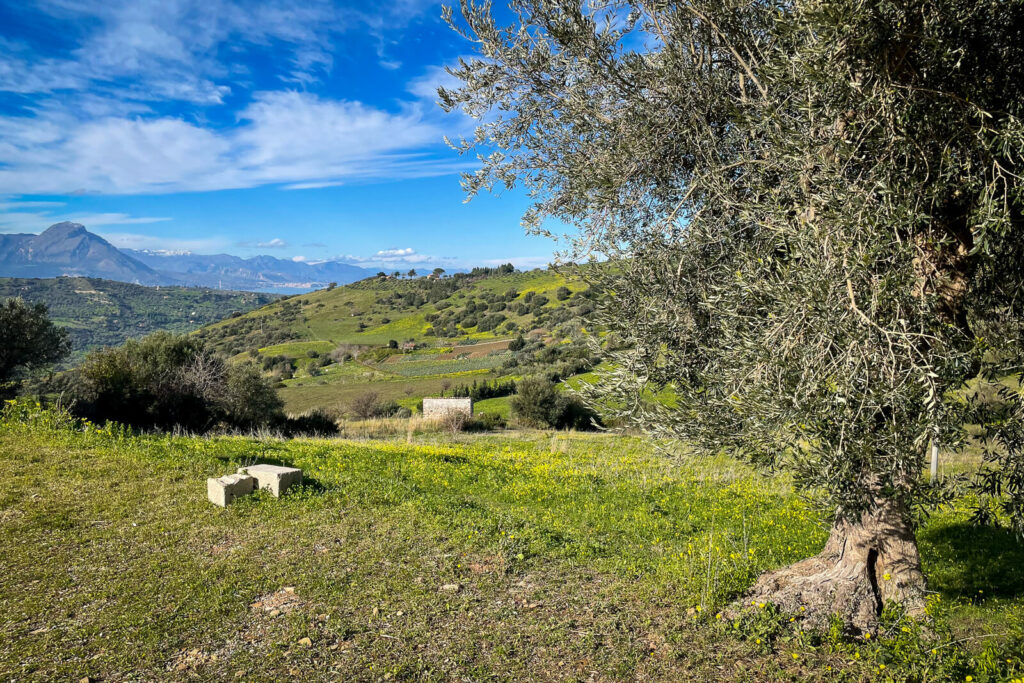
The mechanics of buying land in Sicily work broadly along the same lines as buying a house here. You’ll need to make a binding purchase proposal, and at that point you’ll need to transfer a deposit of at least €5,000 into the account of a third party – this could be a notary but would usually be Property in Sicily. Obviously if the bid is rejected and a compromise can’t be reached, every cent of this will come straight back to you.
However, we can usually find an agreement, and from this point onwards it will only be necessary to send the paperwork to a notary and eventually sign the contract. If you are not able to do so in person, if you grant us your Power of Attorney we can do so on your behalf.
If you’re not familiar with the system, we recommend you check out our guide How to Buy a House in Sicily for a more detailed explanation.
Want to be sure you can build what you want before buying the land?
Sometimes, buyers can worry about buying land before they have the planning permission in place. While we understand that nobody would want to end up with a plot of land that they can’t use, there are two solutions we can recommend.
- One is to make a purchase offer which is contingent on your designs being approved by the municipality. Of course, if you are selling a plot then you’d always rather take an unconditional offer which can go through immediately, so it will inevitably be necessary to offer the seller an incentive.
In one recent example, an Austrian client of ours was able to make a deal by making a €50,000 offer for a €45,000 plot, with the extra €5,000 guaranteed, whatever the council decided. A little more expensive, but certainly a way to minimise risk for both parties.
- Another option, and one which we would always recommend, is to retain us as project managers. Because our staff and collaborators are so well versed in Sicilian planning rules, we will make sure that you are only presented with possibilities which are feasible from the start.
We’re not saying that you won’t ever be asked to resize a window or change a paint shade, but by talking to us about your plans for the land in advance we can certainly give you the confidence to make an offer with the knowledge that you won’t be disappointed by the end result.
4. Get your team together
In classic movies like Ocean’s Eleven there’s always a three minute montage where the gang get assembled… Brad Pitt and George Clooney meet their chosen crew and persuade them one by one to come on board with the job. Sadly, in real life things move a lot slower – but you can speed them up by taking advantage of our network of first-class professionals and tradespeople. We may not have Brad Pitt on our payroll but you can be certain we’ll choose your team every bit as carefully as he does.
We’ll go through the cast list you’ll need in Section 5 of this guide. At this stage you’ll need everyone involved in the design and legal aspects of the project – the construction team will come on board a little later on
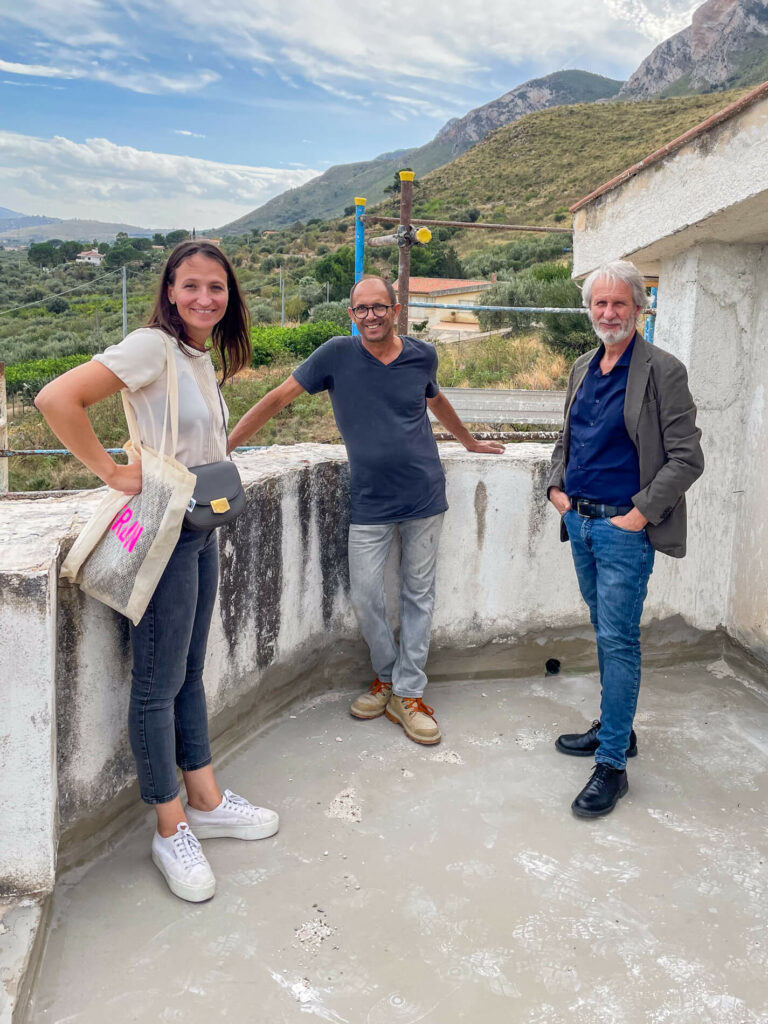
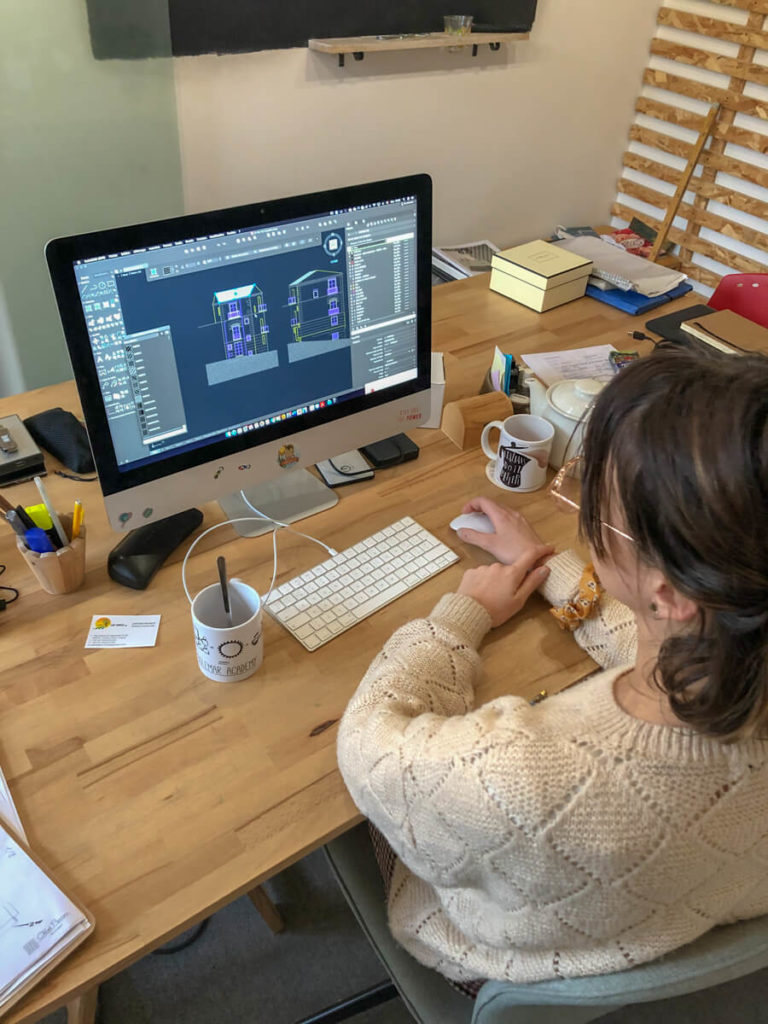
5. Create your plans
With the help of your newly-assembled team, you will need to make the big decisions about the size and shape of your new property. Another important factor will of course be its exact location on the estate. Unless you’re working with a huge budget you’ll probably want to find a spot that’s reasonably flat to start with, although a semi-submerged basement can be an effective workaround on hilly land.
You’ll also have to consider the length and route of an access road, as well as where you’ll get your water and electricity. Obviously sustainable, independent solutions like wells and solar panels may cost a little more up front, but perhaps the long term benefits will make them worthwhile. We are always available to be a sounding board for your thoughts or a source of information you can rely on.
6. The Computo Metrico, or Bill of Quantities
Now the design team will also formulate a key document called the Computo Metrico, or Bill of Quantities. This is basically a list of all the elements of work to be done, but with precise quantities and costs. These costs are taken from regionally-specific lists published by local authorities, and are intended to be a benchmark for the industry to follow. Of course, the market may go in its own direction at times, but you will at least have the bill to use in your negotiations.
At this stage, after gathering various quotes, you will choose your contractor and complete the team. Anyone who’s ever worked on a large-scale project knows to be sceptical of the very lowest offers which you are given, but again, we can help you sort through them and investigate the professional history of the people bidding for your work.
7. Submit the proposal
With all the plans agreed and drawn up, your team will submit the request to the council, and then go to the technical office there to collect the Permesso di Costruire, or planning permission. This document will also specify the contractor who will build your new house in Sicily.
8. The build itself
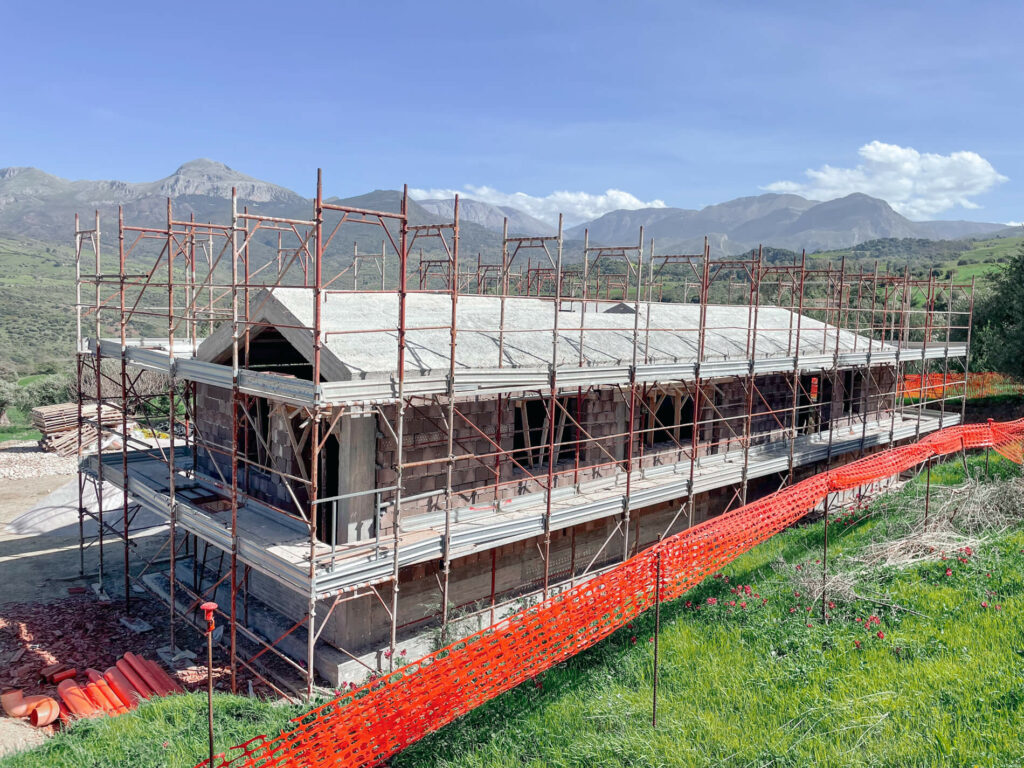
Once you break ground and work is under way, the first months usually run smoothly because the work is standard. Foundations usually take a week to lay, then the structure will typically go up in about eight weeks, and the roof and any plaster or cladding will take a few more.
After this, it becomes really important to coordinate the project well. The next phase of work will include all of the features which make the house yours, like wiring, tiling and bathrooms. There will be new faces arriving on site like plumbers and electricians, and decisions to make which are a question of personal taste. In this second phase there will be constant decisions to make, and it is of course vital to keep a close eye on how everything comes together.
One way to do this is to come to Sicily in person. If that’s not possible, you’ll need a proxy who can. An architect who is experienced in interior design is a huge asset, but you will also need them to be great communicators. We often work with Chloé Pierron and her team at Studio 2C, who are longtime collaborators of ours and produce fabulous designs which combine modern style with repurposed materials and historical tones.
9. Certification
After the work is finished, your architectural team will certify the completion. The contractor will issue you with a 10 year guarantee on the house.
10. You move in
…and live happily ever after!
If you are planning to make Sicily your primary residence this may bring some significant tax advantages. If you’re Our Welcome to Sicily after-sale package can help smooth the transition to life here. But those are questions for another day.
What Kind of Land to Buy
There are two main types of land which you can buy to develop: Some plots are classed as ‘agricultural land’, and others as ‘building land’.
Agricultural Land: Officially ‘class E land’, this is by far the most common type of land which is available. Most of the properties found in our directory are agricultural, and if you don’t see a reference in one of our listings to the designation, you can assume it is agricultural.
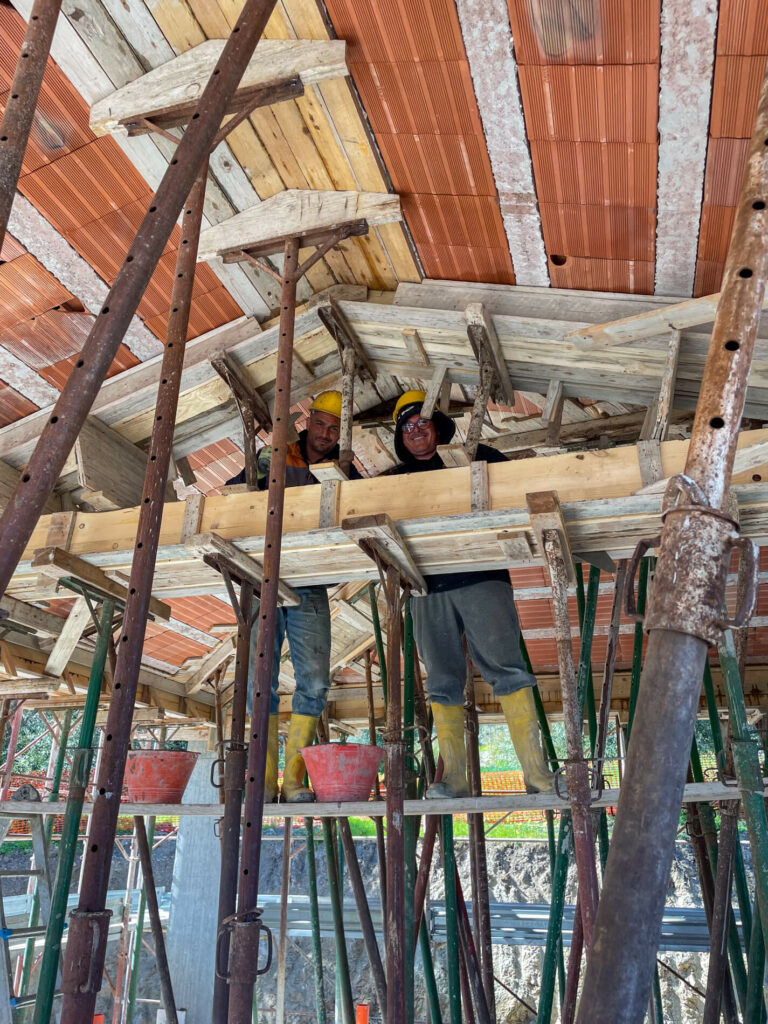
‘The 1% rule’
When you buy a parcel of agricultural land with permission to build a home, you can do so on a ratio of 0,03 m³/m² . This means that you can have 0.3 cubic metres of building for every square metre of land you buy.
As a fairly standard height of a single-storey house is three metres, you can sometimes hear this referred to as ‘the 1% rule’:
1% of 10,000 is 100 – so owning 10,000 m² of land means that you can build a 100 m² house.
With agricultural land you can also build a second building, if you register it for agricultural use. This doesn’t have to mean you become a full-time farmer! It could be a place where you store lawnmowers, tree-cutting equipment, perhaps a press for olive or vats to store grapes. The idea is that you are incentivised to care for the land and make it somehow productive.
In reality, this is much simpler than it sounds. A pledge to plant some olive trees or perhaps keep some chickens in a little run will be enough to keep the authorities happy and justify an outbuilding of this kind.
Building Land: If a plot is designated ‘class C land’, then it has been earmarked for development in a more intense fashion. This will usually mean that the municipality is actively trying to encourage the growth or expansion of a town or village in a particular direction.
Buying building land means that you can build far more on a similarly sized estate. This can obviously be very profitable – for instance, you might build several properties and sell the ones you don’t use yourself. Or you could build a community of some kind.
Different rules for every plot
Unlike agricultural land, there is no fixed rule for how much construction is permitted on building land. It depends, essentially, on how many new homes the relevant council wants to see.
Obviously, you will need to know the relevant building ratio when you consider buying building land – if you find it on this site we will always be specific in our property description. It will be more than agricultural land, so 0.1 m³/m² is a baseline, but a very high ratio could be as big as 1.5 m³/m². But let’s say that 0.3-0.5 is fairly standard.
If you buy a 1500 m² plot with a building ratio of 0.50 m³/m², the necessary calculation do the following calculation is 1500 x 0.5 = 750. This means that you can build 750 m³ of houses.
Working on the same basis of a three meter-high single-storey bungalow that we used before, this would mean you could build approximately 250 m² of new home. This could be three small cottages or one super villa – the ratio is for the total area of home
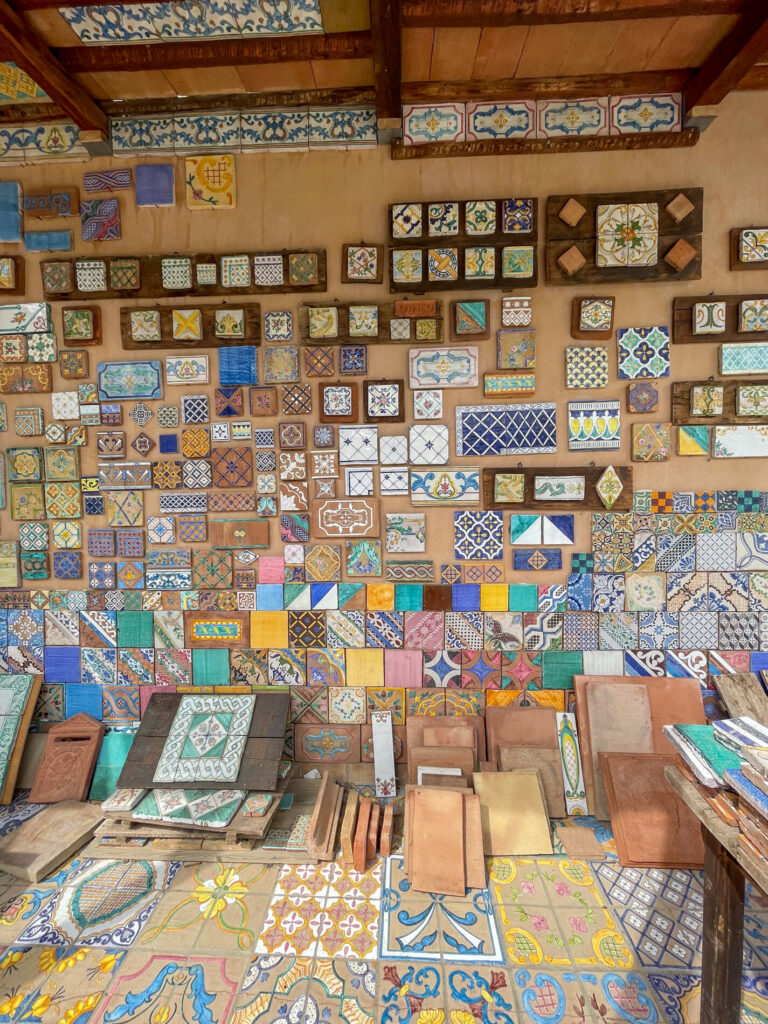
If your project requires you to build more than one house, then finding building land is essential.
Restrictions and Regulations
When evaluating a plot of land, as well as its classification you will also need to be familiar with any ‘vincoli’ or restrictions which apply to it. These usually take the form of a requirement to get approval from some officer or authority.
Here are some of the most common ones which you may encounter if you choose to build your own house in Sicily:
Vincolo Paesaggistico Soprintendenza or Parco (heritage or park): If your land is in an area which is protected (for example, if it is found within a natural parks, like Mount Etna, the Madonie or the Nebrodi then it is important that it is sympathetic to the surrounding landscape and the architectural heritage of the region. Your plans will need to convince the officer of the local or park commission that the building will not be an eyesore or out of keeping with what else is found nearby.
This can be a bit of a grey area, as you won’t usually find a written list of specifications. Some negotiation is usually required, and here of course having an experienced and well-regarded architect is a huge advantage. Generally speaking, it’s not that you have to design a home that looks as if it was built a hundred years ago, but that your plan must be sympathetic to the landscape, unobtrusive to existing neighbours and generally high quality.
– Vincolo Idrogeologico (hydrogeological restriction): If your property has this requirement it means there are issues with the soil and the flow of water over, through or underneath it. This might affect your foundations, or there may be some risk of flooding, for example. In this case you will need your project approved by the relevant geological supervisory body.
– Vincolo sismico (seismic restriction): Much of Sicily, especially the north and east of the island, is susceptible to tremors and small earthquakes. If your land has this designation you will need to obtain approval from a seismic engineering authority to attach to your proposal.
You can request a list of the all of the vincoli which apply to a plot from the local council, or we can do so on your behalf.
The Team you Need
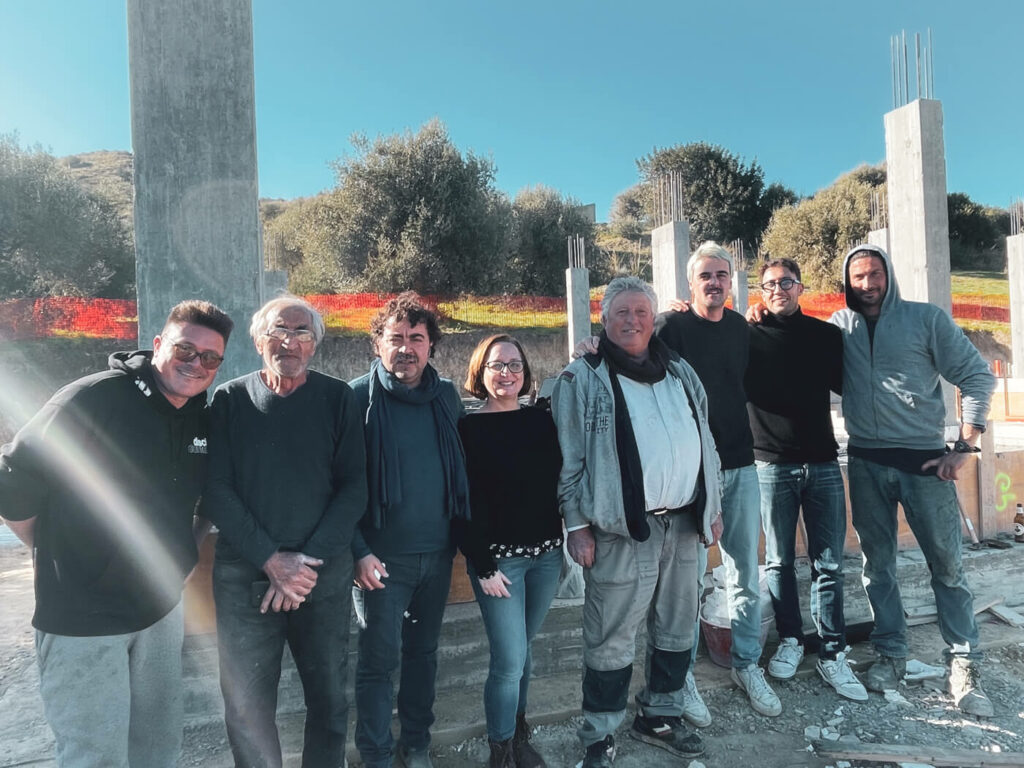
Every project is different, but these are the main people you’ll need to get on board.
Architect: Your architect will not only be responsible for drawing up the blueprints and the Computo Metrico, but will also be the official director of the work. This makes them your eyes and ears on the site, and the project will stand or fall based on their work.
There is no more important decision to get right if you want to build your own home in Sicily, even including the piece of land you buy. If you find an excellent communicator, a diligent professional, and a creative designer with a good eye then the process will be smooth and the result can be thrilling. Without someone who ticks those boxes, honestly, the reality is that you can end up completely lost.
We may not be completely impartial, but have always put our trust in the work of Chloé Pierron and colleagues recommended by her. Of course, Sicily is home to many architects, and you will need to find the one who meshes best with your ideas and style of working. But choose as carefully as possible!
Structural Engineer: This figure will work with the architect to make sure the design is completely safe, stable and in conformity with all of the relevant laws and best practices. You may not spend as much time talking to them as you do to your architect, but the two will need an excellent working relationship.
Geologist: when you dig the hole for the foundations, a geologist will be needed to report on the quality and composition of the soil. This information will go back to your structural engineer, who will have to make adjustments accordingly. Obviously, if the ground is sandy, you will need especially deep pillars, if it is rocky you may have to add a surface layer of concrete, and so on…
If there is any doubt about the soil – say you are in a remote area without any other buildings nearby – you might want to engage one for a preliminary survey.
Agronomist: An agricultural scientist will be needed to compile the necessary paperwork if you are planning to remove any trees, move soil around etc. In reality, this is almost totally unavoidable, so you will need to find one of these figures. You might need to pledge to move trees, or plant substitutes elsewhere, to create a new habitat for birds or other wildlife native to your plot. Your agronomo will help make sure you tick all the right boxes.
Energy Engineer: New construction in Italy needs to hit certain efficiency standards. It is very probable, for example, that you’ll have to install some kind of photovoltaic power. The energy engineer is responsible for making sure that your plans meet these requirements and for certifying your electrical systems at the end of the construction.
Security Manager: The image of Sicily is a relaxed place, and of course in some ways this is very true, but you will still need to submit a risk assessment and security protocol with your plans. A competent security manager will keep everyone on the site safe and well, and also make sure you’re protected from liability in the unlikely event that something were to go wrong.
How Much will this Cost?
We’ve thrown a lot of numbers at you in this article, and of course every project is unique. However, here is a quick-reference guide to let you sketch out that first, back-of-a-napkin budget.
Building a home from scratch: Unless you’re building on an especially large scale or cutting corners, we recommend using €2,500/ m² as a baseline. This will allow you to invest in good quality materials, and most importantly, in expert architects and engineers.
Swimming pool: Who dreams of building their own home in Sicily without picturing a sparkling pool in the grounds? Around €30,000 will let you and your guests cool off in luxury with a magical view.
External spaces: Your covered spaces may be limited by the plot’s building ratio, but that doesn’t mean you can’t make the outside feel like home. Adding an expansive terrace with an outdoor kitchen and dining area, a paved parking area, and maybe a free-standing roof of some kind to shelter you or your cars will require an investment of €20-40,000.
Perimeter fencing: You’ll want to enclose your property, in some fashion, and the simplest way is to put up a simple fence. This costs about €30/m.
Access road: While surfaces vary, €200/m is a reasonable amount to expect to spend.
Staff costs: The full team for purchasing the land, planning, direction of work and certification, can cost approximately 15-20% of the whole investment.
Let’s say you’re building a 100m2 house, with terraces, a garage and a pool, your outlay on the property itself will be about €300-330,000. You should calculate your legal, architectural and engineering project team to be an extra €45-60,000.
VAT: For construction work this is generally 10%. However, a way to save is to build as a private individual, not a construction company, and if the eventual property is to be your main home. In that situation you can pay VAT at 4%.
In the example above, this saving is worth a whopping €18-20,000.
If you are building as a business venture then clearly the tax picture becomes much more complex. We would be very happy to help you find an accountant or financial advisor who specialises in the field and can give you the detailed, reliable information you need to support your project.
Property in Sicily’s Project Management Expertise
If you’ve made it this far into our guide to building your own house in Sicily, congratulations! It’s a complicated area and there are so many different aspects to consider. If you’re not a property developer or builder this will probably be the most expensive and ambitious project you ever embark on.
To take on a challenge of this kind in your home country is enough of an undertaking. To do so abroad, in a second language and with the extra difficulty of navigating an intense bureaucratic system, is a Herculean task. It’s going to take years of work before your new property is ready for you to move into it.
What we want to offer you is a concierge service. A project manager, from our senior leadership team, who is your right-hand man throughout the entire journey. Someone who knows where to find the best land, what is realistic to build on it, and how to get it done with the absolute minimum level of stress and confusion.
We believe in doing business in your language, and to the standards of your culture. We will translate and mediate, using our own international backgrounds and decades of combined experience working with newcomers to Sicily from all over the world to explain in a way that makes total sense to you.
Trying to build from scratch on your own here is like trying to make dinner in a strange kitchen. Blindfolded. And very often, the place catches on fire.
If you trust us to manage your project you will still have the adventure and the option to be as involved as you like in the minutiae of the project, but every step of the way you’ll have things broken down and put into focus. Now it’s like you’re doing a cookery class with your own private instructor. The kitchen is still strange and new, but you’re being coached all along the way.
If you have questions, or would like to open the conversation, we are here to offer a completely free, no-obligation consultation by email, phone, video call or in person.
Conclusions
The decision to build your own house in Sicily is a huge one, but the payoff can be incredible: a place in the glorious Mediterranean sun which could not possibly feel more like your own.
You’ll need to sure you choose your plot with care, but more important still is the team you have around you. There will certainly be obstacles and surprises along the way, but if you have the right support these can all be anticipated and dealt with in a way that keeps the experience feeling positive and focused.
If you’re feeling inspired, take a look at our catalogue of land plots today.
We guarantee:
✔️ A choice of personally selected professionals with proven track records
✔️ The edge of being represented by a local in all price negotiations
✔️ Fast responses and accurate timekeeping
✔️ The most realistic estimates of duration and cost you will find in Sicily
✔️ A cohesive team working together towards your goal
✔️ Expert advice on all red tape and official forms
✔️ Warm introductions to your new neighbours
✔️ You keep complete control of all the decisions you want

